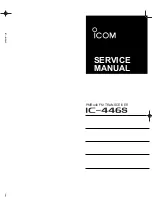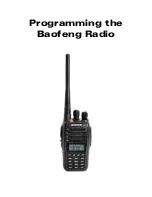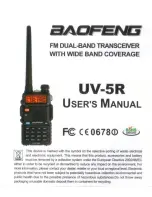
A-2
Section 61245001L7-5, Issue 1
61245.001L7-5A
Table A-2. Inband Addressable Loopback Codes
FUNCTION
CODE
ARM ............................................................... 11000
(also known
as a 2-in-5
pattern)
DISARM ......................................................... 11100
(also known
as a 3-in-5
pattern)
HTU-C NETWORK LOOPUP ........................ D3D3
(1101 0011
1101 0011)
HRE NETWORK LOOPUP ........................... C741
(1100 0111
0100 0001)
LOOPDOWN ................................................. 9393
(1001 0011
1001 0011)
QUERY LOOPBACK ..................................... D5D5
(1101 0101
1101 0101)
LOOPBACK TIMEOUT OVERRIDE ............. D5D6
(1101 0101
1101 0110)
SPAN POWER DISABLE .............................. 6767
(0110 0111
0110 0111)
RESPONSE
NIU LOOPBACK ENABLED: The HTU-R will loopup towards the network.
No AIS or errors will be sent as a result of this loopback. The HTU-C and
HRE will ARM.
The HTU-C and HRE are removed from the armed state. If any of the units
are in loopback when the 11100 pattern is received, they will loopdown.
The LBK LEDs will turn off on all units.
If the units have been armed and no units are in loopback*, the HTU-C will
loopup towards the network, 2 seconds of AIS (all 1s) will be sent, 5
seconds of data will pass, and then 231 bit errors will be injected into the
DSX-1 signal. As long as the pattern continues to be sent, 231 errors will
be injected every 20 seconds. When the pattern is removed, the unit will
remain in loopback. If the pattern is reinstated, the injection of 231 bit
errors will resume at 20 second intervals.
If an HRE is present, the units have been armed, the HRE will loopup
towards the network, 2 seconds of AIS (all 1s) will be sent, 5 seconds of
data will pass, and then 10 bit errors will be injected into the DSX-1 signal.
As long as the pattern continues to be sent, 10 errors will be injected every
20 seconds. When the pattern is removed, the unit will remain in
loopback.
If the pattern is reinstated, the injection of 10 bit errors will
resume at 20 second intervals.
Any HTU-C and HRE
units currently in loopback towards the network will
loopdown and will not attain the armed state.
If the units are armed and the HTU-C, HRE, or HTU-R are in network
loopback, errors are injected into the DSX-1 signal upon detection of the
query loopback pattern.
As long as the pattern continues to be sent,
errors are injected again every 20 seconds. The number of errors
injected each time depends on which unit is in loopback.
231 errors are
injected if the HTU-C is in network loopback, 20 at a time if the HTU-R is
in network loopback, and 10 at a time if the HRE is in network loopback.
If the units are armed and this pattern is sent, the loopback timeout will be
disabled. The timeout option will be updated on the PROVISIONING
menu of the HTU-R (viewable through the RS-232 port) to NONE.
As long
as the units remain armed, the timeout will remain disabled.
When the
units are disarmed, the loopback timeout will return to the value it had
before the D5D6 code was sent.
If the units are armed and this pattern is sent, the HTU-C will deactivate
its span power supply, turning off the HTU-R and HRE (if present).
As long
as the pattern continues to be sent, the span power supply will remain
disabled. When the pattern is no longer being sent, the HTU-C will
reactivate its span power supply, turning the remote unit(s) on.
All units
will retrain and return to the disarmed and unlooped state.
Note: all codes listed above must be sent for a minimum of 5 seconds in order for them to be detected and acted upon.
* If NIU is enabled, then the HTU-R can be in network loopback when the HTU-C or HRE loopup codes are sent.

































